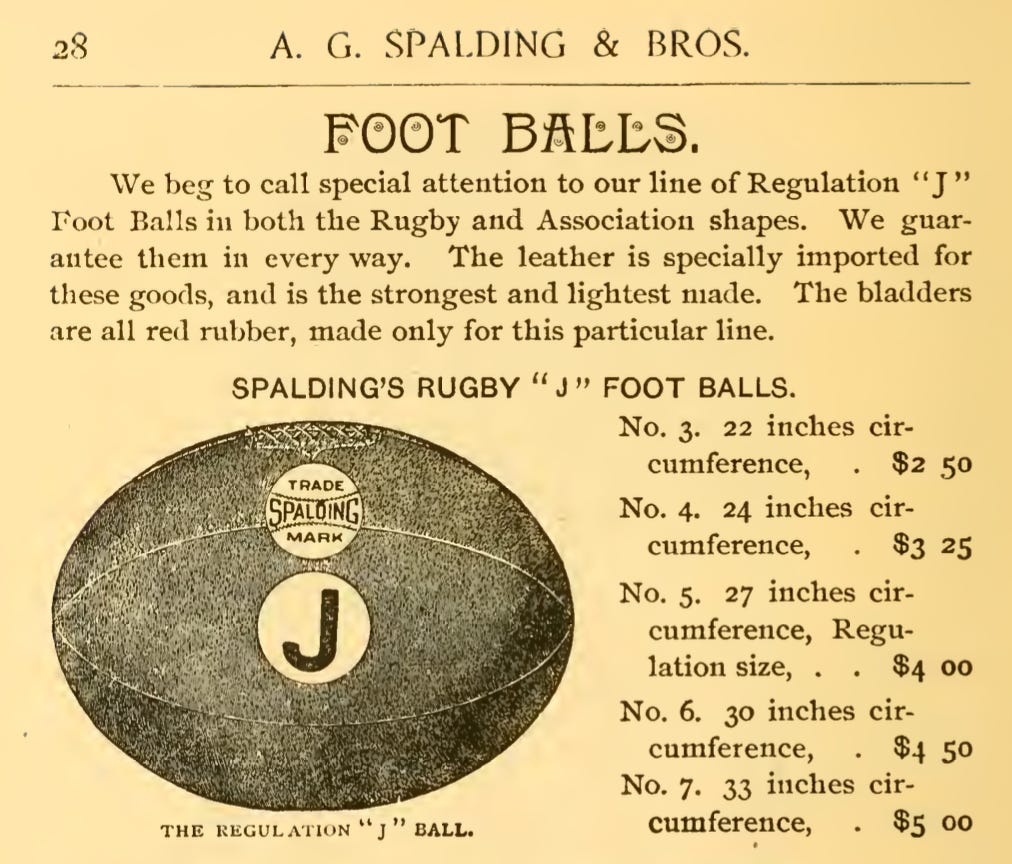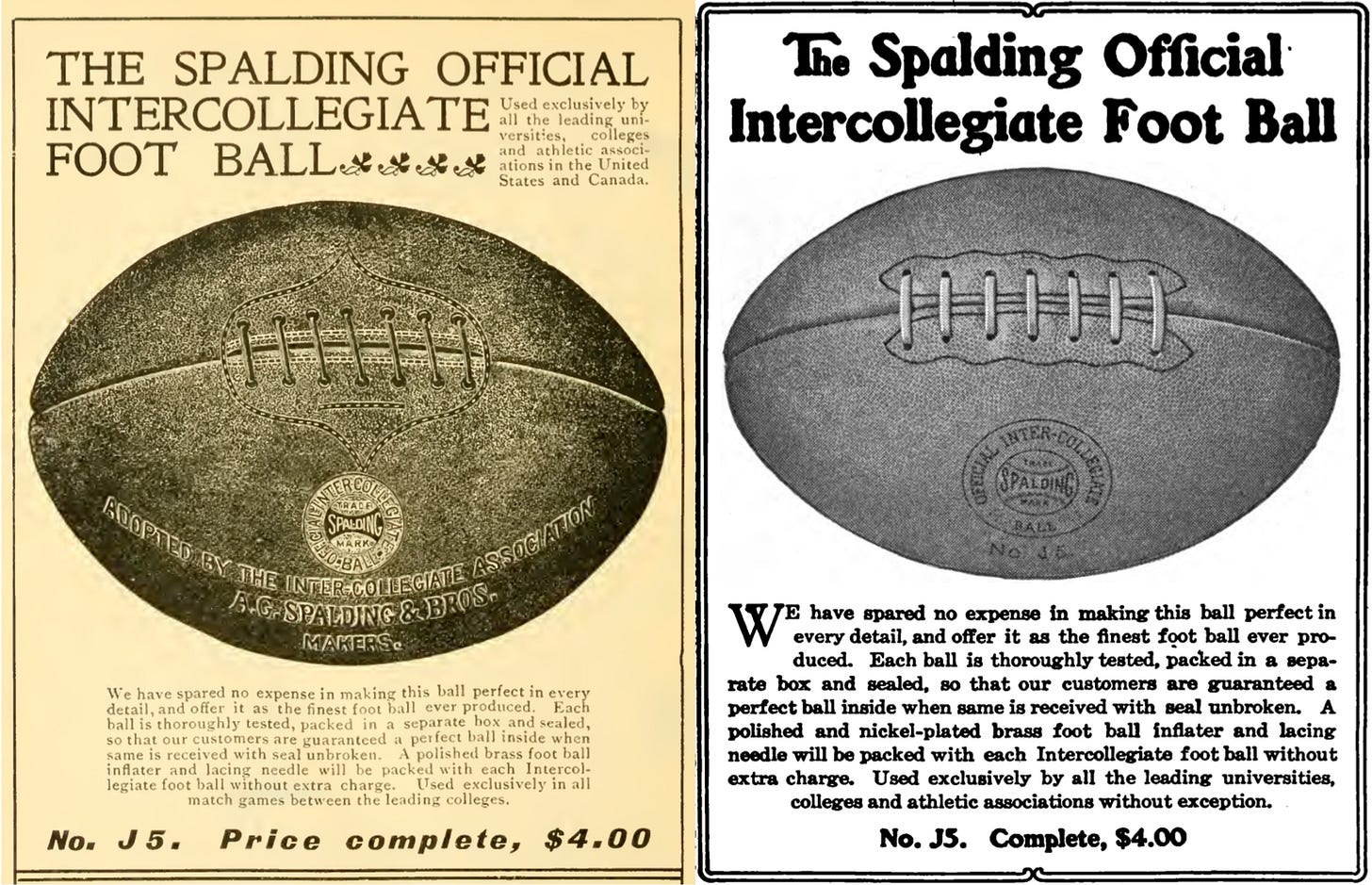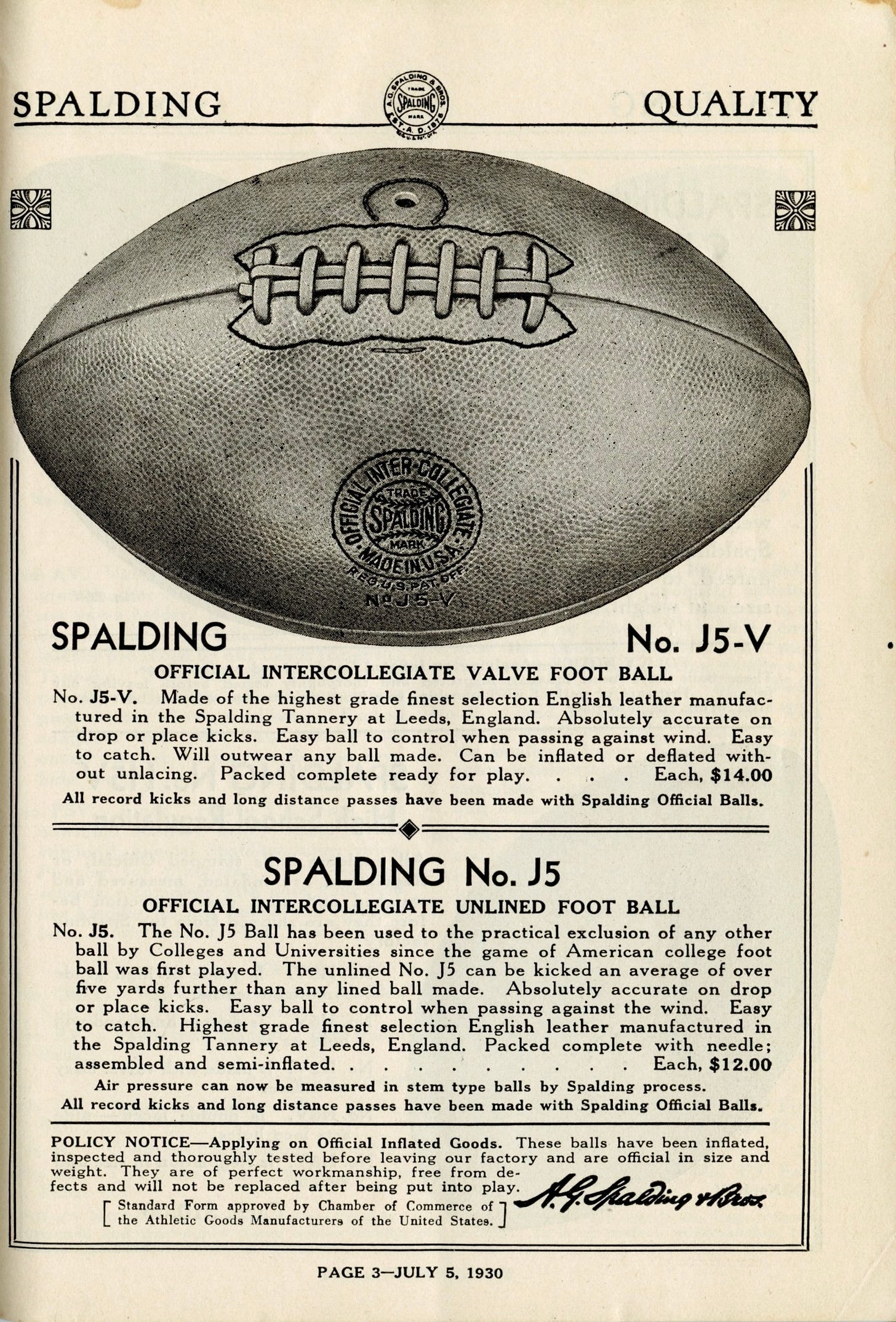Today’s Tidbit... The Once Great Spalding J5-V
It’s funny how things work out. Albert Spalding, a professional baseball player, founded his sporting goods company in 1876 to manufacture baseballs. They moved on to bats, bicycles, and nearly every other sporting good under the sun, some they manufactured and others produced by others.
American football initially used rugby balls of whatever brand and size were available. Inflated balls of the time (soccer, rugby, and American balls) came in sizes ranging from 33 to 19-inch circumferences, with each 3-inch increment designated by a number. The standard rugby match ball was a 30-incher (a No. 6). While American football initially used that ball, as football began emphasizing rushing over kicking, they started using a 27-inch ball, the No. 5.

By 1886, A. G. Spalding sold Lillywhite rugby balls, a top English ball cobranded with a Spalding logo. They smartly convinced the Intercollegiate Football Association to designate the Lillywhite Model J5 (27-inch ball) the official ball by 1890. In 1892, however, Spalding got the Association to switch to a Spalding-made ball that also carried the Model J designation. While the designation officially applied only to the handful of schools in the Association, everyone in the country played by the IFA rules, so the “official” ball status helped sales in all 44 states.
Still, the 27-inch ball was quite sizable and difficult to tote, so Spalding reduced the size of its footballs in 1903. However, it retained the J5 designation for its best ball, meaning the traditional numbering system no longer applied.
Spalding lost the official ball designation in 1903. Still, other manufacturers followed their lead and reduced the size of their balls, resulting in a 23-inch circumference at the midsection becoming the norm until the NCAA reduced the ball’s size in 1929 and 1934.
Of course, everyone alive today who trod the gridiron played with the J5-V, not the J5, so how did the V designator arrive on the scene? While the J originated as a Lillywhite model designator and the 5 indicated the ball’s size, Spalding added the V in 1926, which meant the ball had an internal valve. Until the mid-1920s, balls were inflated using a nozzle inserted directly into the bladder stem housed inside the leather cover. That meant the ball had to be unlaced and relaced whenever it needed more pressure. Likewise, the game lacked a method to inflate the ball to a particular level of pressure consistently. The internal valve changed that, and when the NCAA reduced the ball’s size in 1929, they also set the game’s first inflation standard, which effectively forced teams to use valved balls.
While any number of other brands offered quality footballs, the Spalding J5-V was the game’s dominant ball for decades. It was the NFL’s official ball until Wilson’s Duke took over in 1941. The J5-V or an adapted version, the Spalding J6-V Cushion Control, was the AFL’s ball from 1960 to 1965 before they switched to the J5-V. Likewise, the J5-V was the official ball of the CFL and some of its predecessors for years.
Given the Spalding J, J5, and J5-V’s dominance for much of football’s history, why don’t we see the ball much anymore? First, Spalding sold its football lines to Russell in 2003, which produced the Arena League ball through 2019. Today, the only J5-V manufactured is a rubber ball that does not meet NCAA specifications. More important, Spalding ultimately was hoisted on its own petard. That is, part of their initial popularity resulted from being designated as the official ball of the rulemaking organization. Today, the footballs used by colleges generally align with each school’s official uniform and equipment supplier.
Schools aligned with Nike use the Nike Vapor Elite, those affiliated with adidas use the adidas Dime, and the Jordan teams use the Jordan Fly Elite or similar. Notably, Big Game USA manufactures all those balls and its own Team Issue brand. (See the list of teams using Big Game USA balls here.) Schools affiliated with uniform and equipment brands that do not offer a suitable ball use the Wilson GST or another brand of their choice.
Great brands and products come and go, replaced by others with better technology, styling, or marketing. As a result, even the generations of Spalding footballs that helped define the game eventually fell flat and now spend their days on display rather than in play.
A History of the Football covers everything you need to know about the football’s evolution. Available now on Amazon ($18.99 print, $9.99 Kindle or audiobook, and $0.00 for Kindle Unlimited subscribers)





Al Spalding was one of the first people inducted into the Baseball Hall of Fame. I don't know if he's in the College or Pro Football Hall Of Fame, but he has a case for being there.
I was doing some research on the early days of college football.. and there was a situation back then where there had been several football-related deaths. So the sport became subject matter in political cartoons. It struck me, how rounded the ball was in a lot of the old artwork. Those vintage cartoons are now a good historical/visual record for the ball's evolution.